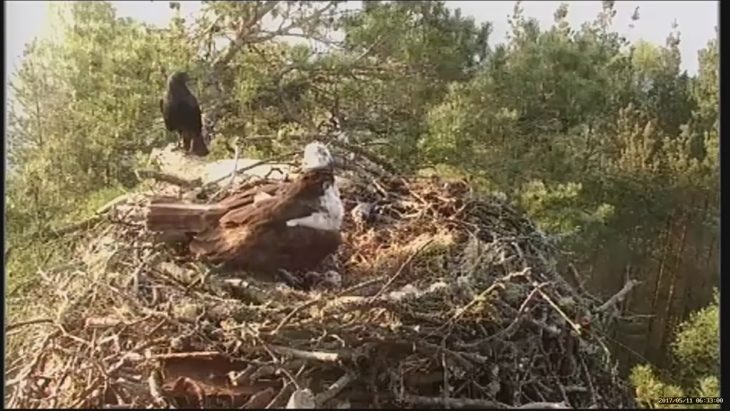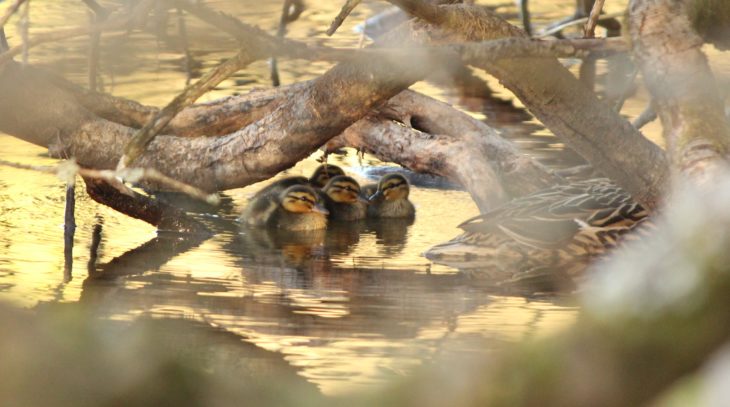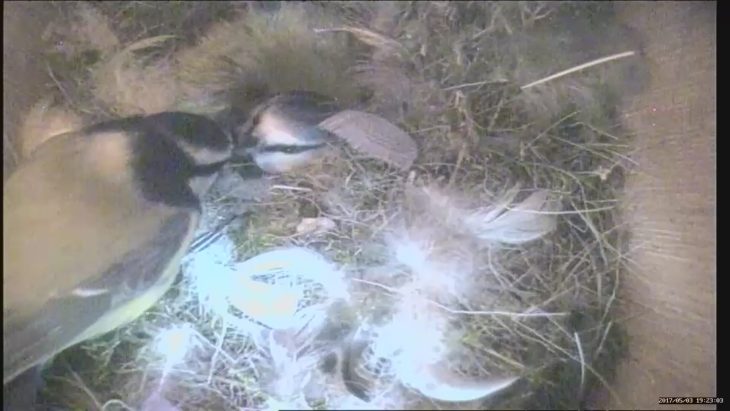New life on the loch
The countdown has begun, we are now at 38 days of incubation from the first osprey egg. Usually the female LF15 incubates her egg 38/39 days. Now we are very close to D-day and we are waiting with impatience, making sure that nobody disturbs the pair while incubating. This morning a crow came to visit the male on the nest and LM12 began ‘mantling’, a specific posture designed to cover the eggs and protect his nest.

The eggs have started to hatch in the nests of other bird species. It has been exciting to watch the Canada goslings and mallard chicks, today we counted 7 and 9 respectively. They follow their parents and try to jump on the bank with little success…

At the same time the blue tit has started to incubate the eggs on the 4th of May. We can count 7 eggs on the nest. The incubation is covered only by the female, she leaves her cosy nest sometimes during the day but does not leave her eggs without protection for more than 10 minutes. It is gently that the male comes a few times per day to feed her. We are expecting to see the eggs to hatch between the 16th and the 20th of May, fingers crossed!

The night shift is going well, and we can gaze at the sunrise earlier and earlier, giving more time for the wildlife to get food and raise their young. Almost every morning we can observe and hear the beavers eating the branches in front of the hides. Meanwhile, the cuckoo is one of the first bird song we can hear. These unusual birds have just completed their migration from Africa to spend their summers here in Scotland.
The cuckoo has a particular behaviour, in fact the female cuckoo lays her egg in a host species nest, removing a host egg in the process. After the incubation period, the young cuckoo hatches before the others and throws them out of the nest! The host parent then feeds the chick, which can sometimes end up bigger than the parent! Interestingly, female cuckoos seem to favour nests of the species they themselves were raised by as chicks. The cuckoo population has sadly decreased in the last 60 years alongside similar declines of their host species. It is thought that habitat loss and climate change are the leading causes.
It is very nice to see that the birds take advantage of the nest boxes we put up for them. It is thanks to these small actions, like put nest boxes in our gardens, that we can make a difference and help the birds to breed and nest safely and successfully.
Chloe Fourneret
Help protect Scotland’s wildlife
Our work to save Scotland’s wildlife is made possible thanks to the generosity of our members and supporters.
Join today from just £3 a month to help protect the species you love.
Preface
The countdown has begun, we are now at 38 days of incubation from the first osprey egg. Usually the female LF15 incubates her egg 38/39 days. Now we are very …
